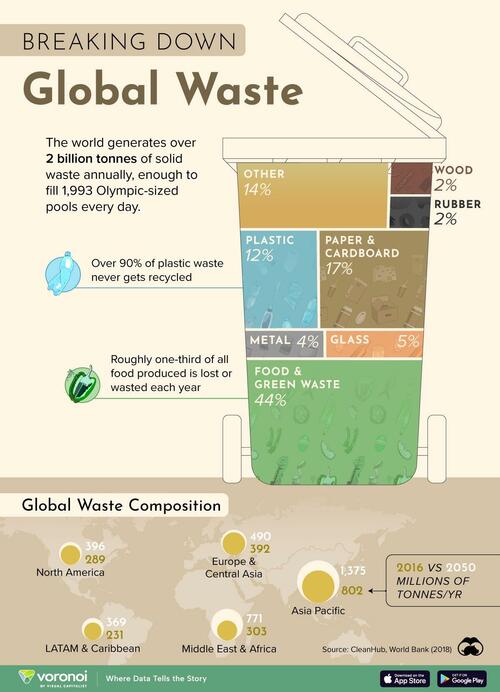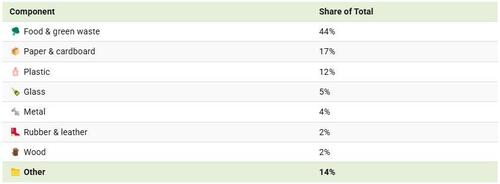
What A Load Of Rubbish…
Eight billion people in the world generate a lot of municipal garbage. By 2050, the World Bank estimates humans will generate 3.4 billion tonnes of global waste.
That’s enough to line up garbage trucks from the Earth to the Moon and back – several times over.
But, as Visual Capitalist’s Marcus Lu details below, nearly half of all that garbage is from an unexpected source. We breakdown all the components of solid waste from World Bank data, which uses estimates for 2016 and 2050.

What Fills the World’s Trash Bins
Food and green waste accounts for a majority of the world’s garbage (44% of the total).
Paper and cardboard (17%) and plastic (12%) are the next two major categories of waste.

There’s a positive correlation between income and waste generation. High-income countries account for only 16% of the world’s population but more than one-third of the waste generated.
However, it’s the middle- and low-income countries that will lead to more waste generation by 2050, particularly in Asia and Africa.
Why is this?
As the World Bank explains, waste generation scales up as income levels rise.
For high-income countries, per capita waste generation is already peaking, and is expected to grow 19% by 2050.
On the other hand, low- and middle-income countries (where per capita waste is much lower but where incomes are rising quickly) could see their waste generation grow by 40%.
According to the World Bank, global waste is growing at more than twice the rate of the population.
Want to get more perspective on staggering food waste? Check out: How Much Food is Wasted per Person by creator MadeVisual.
Tyler Durden
Tue, 04/15/2025 – 02:45
















